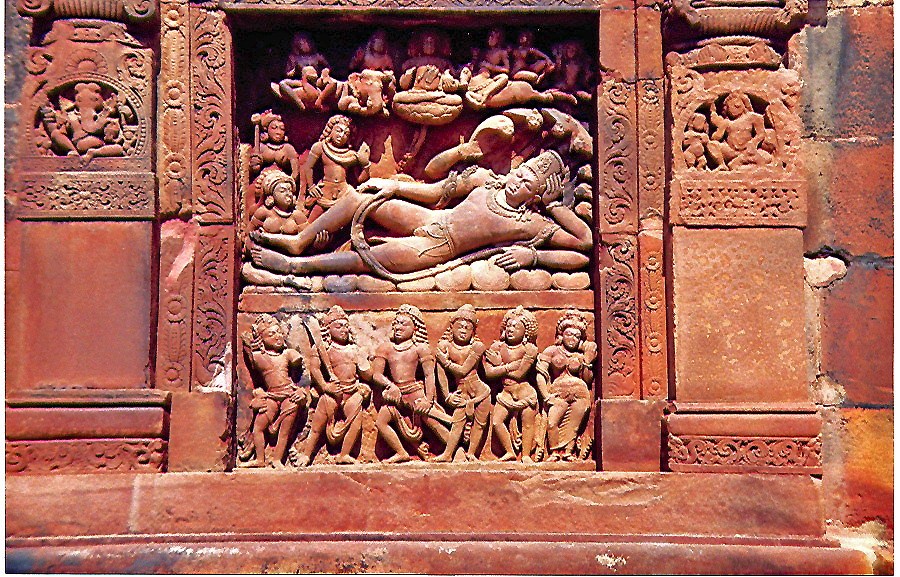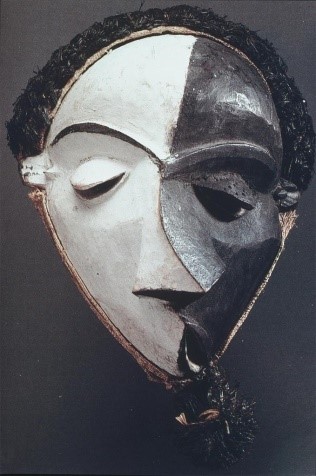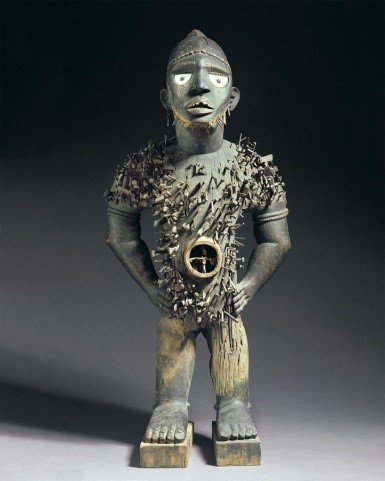Art that Teaches
The impulse toward art extends outside the home and into the larger society. Cultures weave their people together and express their vision in a wide variety of artistic forms. Now, a key requirement for any culture is to instruct its members in how to think, communicate, work, and behave. Thus, much art is designed to teach:
Didactic Art
Instructive; designed to impart information, advice, or some doctrine of morality or philosophy. Much of the most ancient surviving literature is didactic, containing genealogies, proverbial wisdom, and religious instruction. Most European literary works of the Middle Ages have a strong didactic element, usually expounding doctrines of the Church (Didactic).
We see this didactic purpose in the Confucian and Buddhist themes of Chinese landscape art. The beauty and wonder of these paintings lift viewers out of the querulous mundane and into edifying reflections on transcendent spiritual dimensions of life. Beholding them, one learns much about the good life as understood in Chinese culture.
We see this didactic purpose in the Confucian and Buddhist themes of Chinese landscape art. The beauty and wonder of these paintings lift viewers out of the querulous mundane and into edifying reflections on transcendent spiritual dimensions of life. Beholding them, one learns much about the good life as understood in Chinese culture.
The Gods with Us
You will not be surprised if I remark that a great deal of the world’s art teaches religious lessons and cultivates piety. Until very recently, great public buildings were either temples or palaces, and often both at once. A major role of the art in a temple is to communicate the themes and ideas of the faith. Consider this example.
 |
| Vishnu Reclining on Serpent-Bed of Shesha. (6th Century CE). Frieze: sandstone and masonry. Deogarh, India: Dashavatara Temple. |
About 2,500 years ago, the Hindu blend of philosophy and religion arose in South Asia and expressed itself in art. The temple frieze on the left depicts the god Vishnu reclining in a dream. Hindus see the universe as an infinitely repeating cycle of creation and recreation flowing through Vishnu, who continuously dreams the universe into orderly existence. Vishnu slumbers on the coils of the serpent Shesha who embodies the cycles of creation and destruction. This frieze affirms nothing less than all reality: time, space, and the cycle of infinity.
Many world cultures link well-being—health, prosperity, success in conflict, power—with the presence and approval of their gods. Some cultures cultivate intimate relationships with the spirit world through ritual. Many African peoples combine the arts of dance and mask making to seek the aid of the gods. Performers wear masks that represent spirits mediated through ritual dance.
 |
 |
 |
| Mbuya (sickness) mask. Pende people | Power figure, nkondi tatu. (19th— 20th century). Luba people | Power figure, (20th century). Kongo people. Wood, natural fibers, glass, metal. |
But wait. What’s going on with these power figures, apparently tortured by nails? Something quite different from what might be imagined by those from a different cultural background. These figures do not represent violence. Rather, as explained by the Minneapolis Institute of Art web site, the nails represent specific petitions and blessings:
Poer Figures
For a long time, African cultures were dismissed by Europeans and Americans as primitive, inferior. In the late 19th Century, Western artists led a gradual discovery of the great sophistication of various African cultures. We will meet that Pende mask again in Module 4.
References
Mbuya (sickness) mask Zaire [Wooden mask]. (n.d.). ARTstor https://library-artstor-org.ezproxy.bethel.edu/#/asset/ARTSTOR_103_41822001426186
Power figure [Sculpture]. (early 20th century). Minneapolis Institute of Art, Minneapolis, MN, United States. https://collections.artsmia.org/art/1854/power-figure-kongo
Power figure, nkondi tatu [Sculpture]. (ca. 19th – 20th century). ARTstor https://library-artstor-org.ezproxy.bethel.edu/#/asset/BERLIN_DB_10313630613
Vishnu sleeping, protected by Shesha [Frieze]. (ca. 6th century). Wikipedia. https://en.wikipedia.org/wiki/Dashavatara_Temple,_Deogarh#/media/File:Anantasayi_Vishnu_Deogarh.jpg
